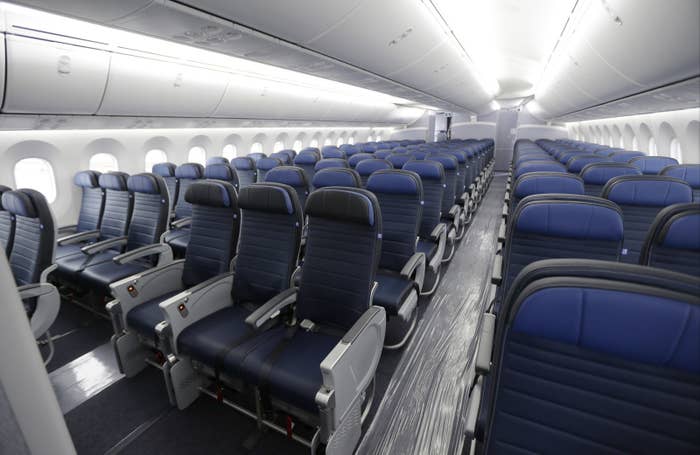
WASHINGTON — Airplane seats have been getting smaller, and the Federal Aviation Administration is okay with that.
In court on Friday, the agency defended its decision to reject a petition for seat size standards. Small seats might be uncomfortable, but the agency concluded that they didn't present the kind of immediate safety risks that would require action.
A federal appeals court in Washington, DC, will decide if the agency presented enough information to back up that decision.
Smaller seats placed closer together allows airlines to fit more passengers on a plane. There aren't any federal regulations about the size of airplane seats or how much legroom passengers should get, although the FAA does require airplanes to be configured in such a way that all passengers and crew can evacuate within 90 seconds in an emergency.
A major point of contention is the fact that the FAA didn't provide information it says exists about evacuation demonstrations that involved smaller seats, on the grounds that it is proprietary airplane manufacturer information that can't be made public.
Cramped seating is a common complaint among flyers, but so far the FAA and Congress haven't intervened. The US Senate last year rejected an amendment introduced by New York Sen. Chuck Schumer that would have required the FAA to establish minimum seat size standards.
Now the fight is in court. Citing concerns that smaller seats could make it harder for passengers to evacuate in an emergency, as well as other health and comfort issues, the Flyers Rights Education Fund petitioned the FAA to regulate seat size and pitch (the distance between one point on a seat and the same point on the seat in front of it.) According to the group's court papers, seat widths have shrunk from 18.5 inches in the early 2000s to 17 inches now, and seat pitches have gone from 35 inches to as small as 28 inches.
After the FAA denied the petition in February 2016, the flyers rights group took the case to the US Court of Appeals for the DC Circuit. When an agency rejects a petition to go through a rulemaking process, judges are required to give agencies a large amount of deference. But agencies do have to provide a reasoned explanation for their decision.
On Friday, a three-judge DC Circuit panel expressed skepticism that the FAA should have to release a large amount of technical information about evacuation demonstrations — manufacturers conduct the demonstrations that the FAA reviews — and seat configurations to back up its determination that seat size wasn't a priority. One of the judges also questioned whether the petitioners showed that they suffered a concrete harm from small seats, as opposed to just general concerns, to have standing to bring the case in court.
But the judges did seem troubled that the agency was citing information that it hadn't provided to the petitioners or to the court, and couldn't provide certain details about the size of the seats and the height and weight of test passengers involved in evacuation demonstrations and simulations.
The US Department of Justice lawyer arguing for the FAA, Karen Schoen, said that studies on airplane evacuations had focused on the ability of passengers to move around the aisles and exits, because that's where there were bottlenecks that could slow down an evacuation.
Wasn't it logical to consider passengers' ability to move from their seats, Judge Patricia Millett asked. Schoen replied that there might come a time later when the agency decides that seat size is something it needs to explore.
Judges Judith Rogers and Cornelia Pillard also heard the case.
